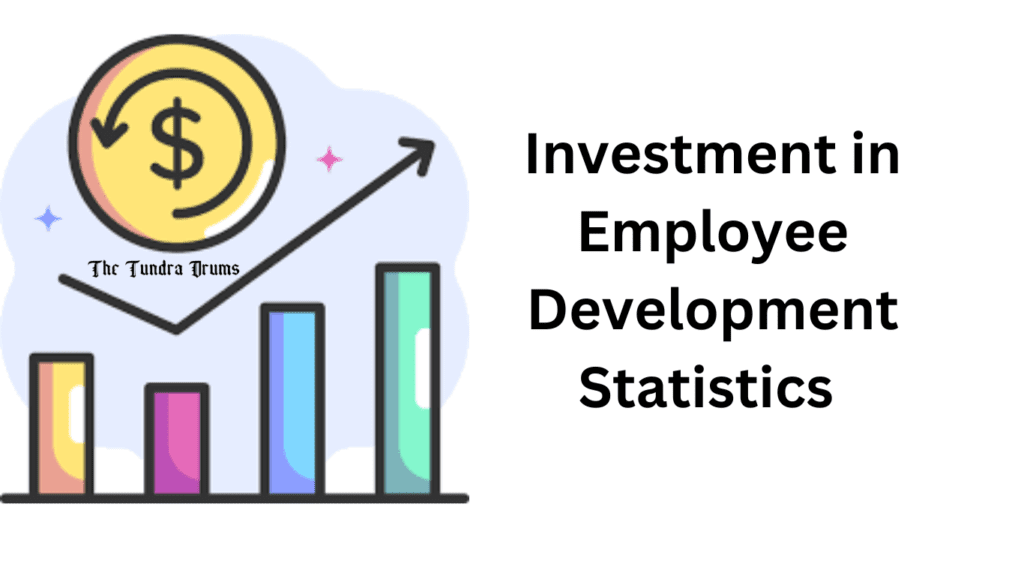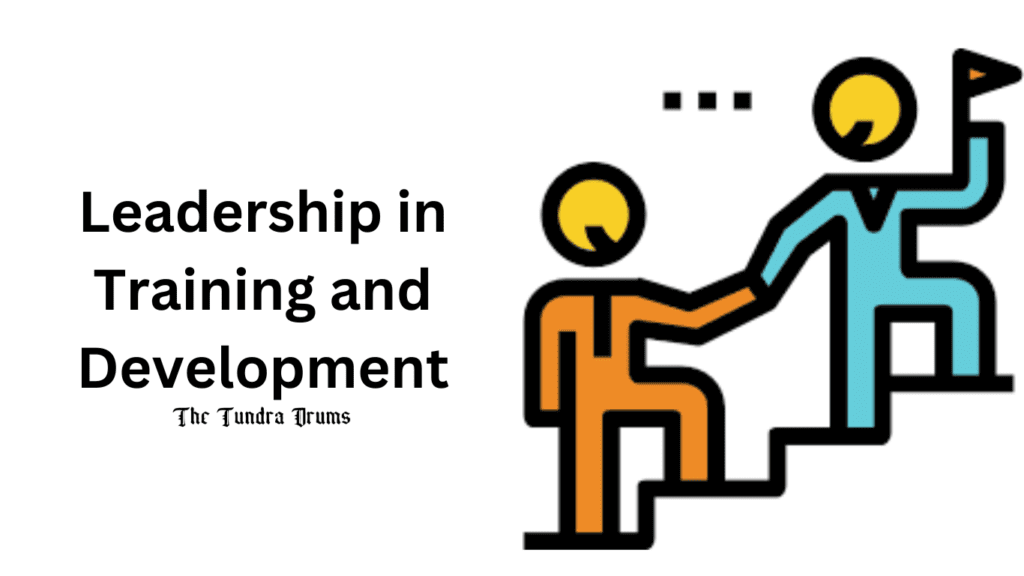Are you curious about the real impact of employee training and development? You’re in the right place. In a world where change happens rapidly, keeping employees up-to-date with the latest skills and trends is more important than ever. Understanding employee training and development statistics can provide valuable insights, whether you’re a business owner, manager, or HR professional.
Investing in your team’s growth isn’t just a smart move—it’s essential for achieving long-term success. We’ll discuss how much companies spend on training, the most effective programs, and employees’ perspectives on these opportunities. How do organizations measure the return on investment? How does ongoing training enhance employee engagement and satisfaction? The data speaks volumes.
Investment in Employee Development Statistics

1- Investing in training and development can result in a 21% boost in profits for companies
- Effective learning programs lead to higher workforce retention and increased productivity. When employees are motivated to stay, organizations benefit from significant cost savings and improved operational efficiency.
- 94% of employees believe that development opportunities are crucial to their retention with the company.
- Approximately 57% of companies invest between $500 and $3,000 per employee in training. While some may hesitate due to concerns about investing in staff who might leave, both organizations and employees recognize Learning and Development (L&D) as a potent retention strategy and a valuable investment in their future.
- Recent surveys on employee training statistics reveal that 57% of companies dedicate $500 to $3,000 per employee for improvement. Furthermore, only 9% of organizations allocate less than $500 per employee, with another 15% investing between $3,000 and $5,000 per worker.
Correlation Between Training and Employee Retention Statistics
2- 94% of employees indicated that development opportunities would significantly influence their decision to stay in a role
- According to LinkedIn’s 2023 Workplace Learning Report, 93% of organizations express concerns about employee retention. The top strategy for improving retention is providing learning opportunities.
- According to data from Built In, 45% of employees are inclined to remain in their positions if provided with additional opportunities. This statistic underscores the significance of retention, especially in light of recent trends. For instance, over 4 million U.S. workers quit their jobs in June 2022, and globally, 40% of workers across six countries have expressed intentions to leave their current roles. These findings highlight the critical role that comprehensive programs play in fostering employee loyalty and commitment.
- As per SHRM, 83% of HR managers view programs as a valuable tool for attracting suitable candidates. Moreover, 86% of these managers highlight its critical role in employee retention. The survey further indicates that 76% of employees are likelier to stay with a company offering continuous training. These findings underscore the dual benefits of training in attracting talent and enhancing employee loyalty.
- Investing in career mentoring and coaching helps keep employees longer. By offering interactive activities and pairing employees with mentors and coaches, you prepare them for success and improve retention rates.
- An impressive 53% of Gen Z workers born between 1996 and 1997 see learning as essential for advancing their careers. This enthusiasm for learning enhances the impact of training programs designed to meet their career growth aspirations.
Leadership in Training and Development

3- According to Lacerenza et al. (2017), leadership development has notably impacted companies, resulting in a 25% increase in organizational outcomes
- This impact becomes even more pronounced when leadership training is extended to personnel below senior levels.
- Companies that embrace a broader approach to leadership development perform better than those restricting growth solely to management by 4.2 times.
- In 2019, global investments in leadership training were estimated at $370.3 billion, with North America contributing $169.4 billion (Size of the Training Industry, 2020). These figures reflect a slight increase from 2018’s $366.2 billion, marking the continuation of a steadily rising trend.
- According to Go Remotely (2021), 83% of organizations emphasize the importance of developing leaders at every level.
- According to LinkedIn (2023), half of learning and development professionals collaborate closely with executive leadership, while 44% engage closely with the chief human resource officer.
Employee Engagement Before and After Training
4- According to a survey, 92% of workers believe workplace training positively impacts their job engagement
- Nearly 60% of workers find that training enhances their job performance. Additionally, 51% feel that training boosts their confidence, and 41% report improvements in their time management skills as a result—meanwhile, one-third (33%) attribute salary increases to training.
- A significant majority, 70%, of employee learning occurs informally on the job. Approximately 20% of learning stems from coaching, mentoring, and colleague interactions, while the remaining 10% results from formal training programs. Despite this distribution, there is ongoing debate among learning and development professionals regarding the emphasis placed on formal training within this model.
- According to SHRM, 92% of survey respondents agree that training goals should enhance the employee experience, underscoring the significance of aligning training initiatives with organizational culture.
Emerging Challenges in Employee Development Training
5- A LinkedIn Workforce Learning Report found that 93% of employees are likelier to stay with a company that invests in their careers. This focus on growth is especially crucial in today’s job market
- A recent Work Institute study highlights the financial impact of employee turnover, estimating that U.S. businesses lost over $700 billion in 2021 alone.
- According to Gartner research, a lack of career development opportunities is a key driver of employee disengagement and, ultimately, their decision to leave. By investing in employee training programs, companies can foster a more engaged workforce and reduce costly turnover.
- Beyond traditional job-specific training, a Society for Human Resource Management (SHRM) survey revealed a strong employee desire for skills applicable to both work and personal life. This includes areas like mental health, financial wellness, and social skills.
- Notably, 81% of those surveyed expressed interest in self-management training, encompassing goal setting, self-motivation, and stress management. Recognizing this demand, a promising 77% of companies plan to implement training programs focused on these life skills within the following year.
How to Boost Employee Performance

6- 74% of employees feel that the lack of development opportunities is stopping them from reaching their full potential
- 91% of employees seek personalized and relevant training.
- 55%percent of employees say they require more training to enhance their skills.
- Investing in development resulted in a 24% increase in productivity.
- Leadership training boosted participants’ learning capacity by 25% and their performance by 20%.
- Only 26% of employees report being challenged to learn a new skill in the past six months.
Learning, development, and formal training are excellent methods to enhance employee performance and help them reach their full potential. However, many employees feel they lack the necessary tools and opportunities to excel.
These statistics on employee development reveal that employees are eager to acquire new skills. They also provide evidence that when employees are given the chance to learn, they improve in their roles.
Benefits of Career Development and Training for Your Business
7- 92% more likely to create innovative products and processes
- 24.52% more productive,
- 56% more likely to be first to market with new products and services, and
- 17% more profitable compared to their competitors.
Additionally, 84% of companies believe that a learning culture results in a more resilient organization and an improved workplace environment.
Impact of Engaging Training Programs
8- 41% of employees believe that dull training programs can impede learning
Dull training courses are turning off employees. A staggering one-third of workers find traditional training monotonous. To boost employee engagement and learning, organizations need to implement dynamic and inclusive training programs.
Interactive and relevant training can increase employee satisfaction and loyalty. Dynamic training programs help employees acquire new skills faster and apply them effectively.
Importance of Upskilling Employees for the Competitive Edge
9- A staggering 40% of Fortune 500 companies rely on Learning Management Systems (LMS) to maintain a competitive edge
HR professionals pinpoint conducting internal skills gap assessments (74%), tracking business KPIs (66%), participating in upper-level meetings (61%), and staying abreast of industry trends (51%) as critical skills for employees to master.
What do employees truly desire from training
10- 89% of employees crave flexible training options, demanding access to learning resources anytime, anywhere
A whopping 93% desire training that’s easy to complete, while 91% seek tailored learning experiences relevant to their roles. To top it off, 90% emphasize the importance of fun and interactive training.
11- Organizations tend to schedule training once a month 36%
- Most employees (33%) find quarterly training more suitable.
- This discrepancy can lead to training overload, disengagement, or insufficient skill development.
- Addressing this gap is crucial for creating effective training programs that meet employee needs and drive business success.
The State of Corporate Training
12- Fortune 500 companies heavily invest in training, with 40% utilizing Learning Management Systems.
- Skill gap focus: HR leaders prioritize skill development, with a strong emphasis on internal assessments, KPI tracking, leadership involvement, and industry trend analysis.
- Employee preferences: Workers crave flexible, personalized, and engaging training, often at a different cadence than companies provide.
- Training effectiveness: Despite investment, many employees feel training is outdated or irrelevant.
- Budgetary constraints hinder learning and development adoption, with 39% of organizations citing cost as a primary barrier.
The Importance of New Hire Onboarding
13- A staggering 43% of new hires believe their training materials are outdated
Outdated training materials not only frustrate new employees but can also hinder their ability to contribute effectively. A 2023 ELearning Industry survey revealed that this lack of training innovation can negatively impact new hire engagement and creativity.
By prioritizing learning and development in the onboarding process, companies can cultivate a culture of growth and achievement. When employees feel invested in their professional journey, they are more likely to be engaged, productive, and committed to the organization.
Moreover, a strong emphasis on learning can enhance employee retention rates by providing opportunities for career advancement and skill development.
What Employees Expect From Training and Development?
Today’s employees are no longer content with attending a one-size-fits-all training session. They crave a more engaging and personalized learning experience that equips them with the skills they need to succeed. Here’s a breakdown of statistics on employee training and development, along with employee expectations.
- Employees want training that’s directly applicable to their current roles and responsibilities. A bland overview won’t cut it. Studies show that modern employees prioritize efficient and concise training that quickly gets them up to speed.
- Employees are hungry for opportunities to develop their skill sets. A LinkedIn Learning Report states that 88% of employees want to be trained in hard skills like software applications or data analysis.
- Learning should be fine with workflow. Today’s employees value flexible learning options like microlearning modules or on-demand video tutorials, allowing them to learn at their own pace and convenience.
The Win-Win of Training and Development: Benefits for Employers and Employees
Investing in an employee training system isn’t just a feel-good practice; it’s a strategic investment that benefits employers and employees. Let’s explore the advantages for each side:
Benefits for Employers:
- Increased Productivity and Performance: Studies link training and a more effective workforce. A report by the Association for Talent Development (ATD) found that companies with comprehensive training programs have employees with 218% higher income per employee compared to those without formalized training. This translates to a significant boost in overall productivity for the company.
- Improved Employee Engagement and Retention: Investing in employee engagement training shows your commitment to their growth. According to the Society for Human Resource Management (SHRM), 76% of employees are likelier to stay at a company that offers continuous training. This can significantly reduce costly employee turnover.
- Enhanced Innovation and Problem-Solving: Training equips employees with new skills and knowledge, fostering a culture of innovation. A report by Continu found that training programs can lead to a more creative and adaptable workforce that can tackle challenges with fresh perspectives.
- Reduced Errors and Improved Quality: Well-trained employees are better equipped to handle their tasks efficiently and accurately. This can lead to fewer errors and improved product or service quality.
Benefits for Employees:
- Increased Skillset and Career Growth: Training equips employees with the skills they need to progress in their careers. Research suggests that one-third of employees consider training a factor for earning a salary increase. Companies can retain valuable talent and attract top performers by providing growth opportunities.
- Enhanced Confidence and Motivation: Effective training empowers employees. A Devlin Peck study revealed that 59% of employees say training directly improves their performance, while over half (51%) report a confidence boost after training. This newfound confidence can lead to increased motivation and a more engaged workforce.
- Greater Job Satisfaction and Loyalty: Employees who feel valued and invested in their company are more satisfied. Training and development programs demonstrate a company’s commitment to its employees, fostering loyalty and a positive work environment.
The Bottom Line
The data paints a clear picture: employee development and training are not just “nice to haves” but essential for business success. A well-trained workforce is more engaged, productive, and profitable. The statistics highlight a gap between what companies offer and what employees crave.
By prioritizing training, companies can bridge this gap, improve employee satisfaction and retention, and future-proof their organization with a skilled and adaptable workforce. The message is clear: invest in your people, and they’ll invest in your company’s success.











